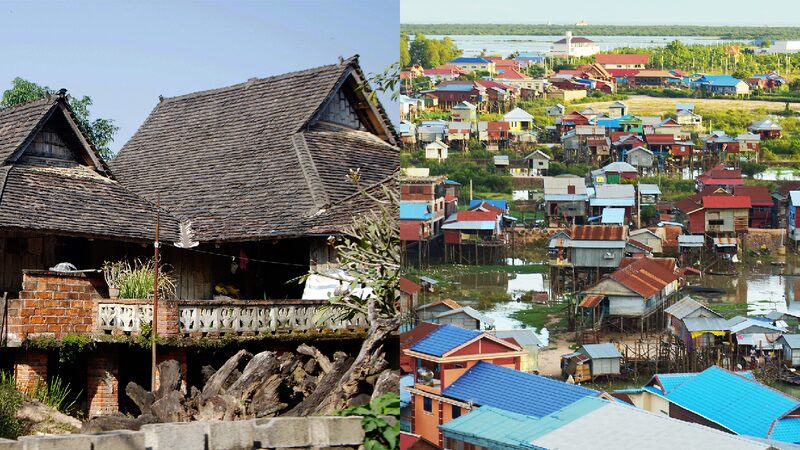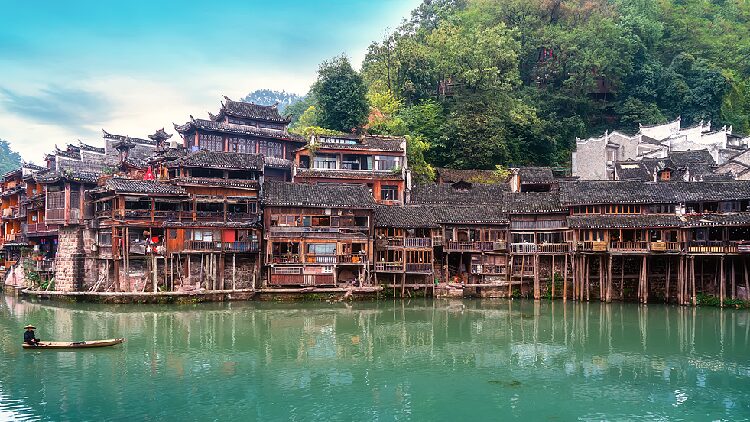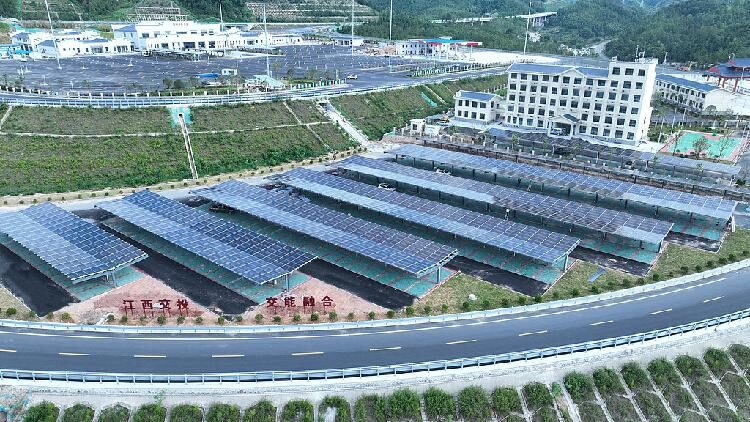In the southwestern province of Yunnan in the Chinese mainland, the Dai ethnic group has a unique architectural tradition that harmonizes with nature. Their bamboo houses, known locally as “ganlan,” are elevated on stilts about two meters above the ground. This design not only protects against dampness, pests, and flooding but also adapts perfectly to the tropical rainforest climate of the region.
The upper level of these “ganlan” houses serves as living quarters for the family, while the space beneath is often used for storage or to shelter livestock. The thatched roofs are steeply sloped to ensure efficient drainage during heavy rainfall, reflecting the Dai people’s deep connection and respect for the natural world.
Similarly, in Cambodia, rural communities have developed stilt houses that closely resemble the “ganlan” structures. Made primarily of wood, these elevated homes provide protection from floods and pests common in the tropical environment. Standing on sturdy columns, they offer excellent ventilation and thermal insulation. Families live on the upper level, which includes bedrooms and kitchens, and often enjoy a front veranda where daily activities and social interactions take place.
Despite arising from different cultural backgrounds, both the Dai bamboo houses and Cambodian stilt houses showcase the ingenuity of traditional Asian architecture. They are prime examples of how human habitats can be designed to adapt seamlessly to local environmental conditions, embracing nature rather than resisting it.
Reference(s):
Traditional raised houses in China and Cambodia embrace nature
cgtn.com








